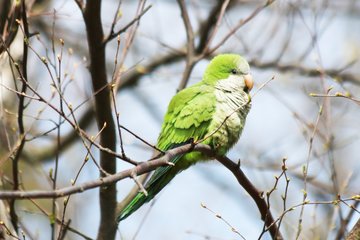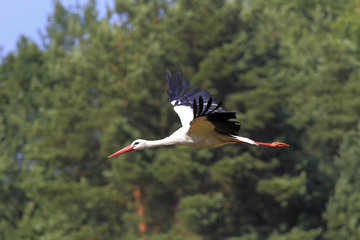Old male blue tits compete with young ones
In the absence of older males, young male blue tits have higher mating success with additional females
In many nests of blue tits, some offspring are sired by a male other than the female’s social partner. It has long been clear that older males are more successful at such “extra-pair” reproduction than one-year old “yearling” males. However, why young males are less successful remained unknown. Researchers at the Max Planck Institute for Biological Intelligence have now found that extra-pair reproductive success of yearlings increased considerably when older males were absent. This shows that young males are less likely to have extra-pair paternity because they are outcompeted by older males, not because they cannot sire extra-pair offspring due to lack of experience or attractiveness.

Most songbirds have a single social partner with whom they reproduce in a given year. Usually, both pair members raise the young together. However, both males and females can also mate with individuals outside this social bond. These “extra-pair” copulations can lead to fertilizations such that not all the young in a nest are sired by the same male. Interestingly, the success of males in siring offspring outside the pair bond (extra-pair young) is age-dependent: young males are much less successful than older males. So far, the reason for this age difference was not known.
One possible explanation for the age effect is that young males that breed for the first time lack the necessary development, experience or attractiveness to achieve successful extra-pair copulations. The performance of young males would then be independent of the presence of older males. However, young males may also be outcompeted by older males. Older, more experienced males might be better at searching for or fighting for extra-pair mating opportunities, or they may be more attractive to females seeking extra-pair copulations. If this would be the case, the low success of young males is simply due to the presence of older males.
Population study

Researchers at the Max Planck Institute for Biological Intelligence have conducted a large-scale field experiment to disentangle these two scenarios. During the last sixteen years, the department of Ornithology, headed by Bart Kempenaers, studied a population of blue tits near Landsberg am Lech in southern Germany. In the last year of the study, the researchers translocated nearly all blue tit males that were older than one year to another suitable breeding site more than 30 km away before the start of the breeding season. As a result, almost all remaining breeding males in the study area were yearlings.
The researchers found that 33 percent of these yearling males fathered at least one extra-pair offspring – a significant increase compared to an average of 13 percent in the preceding “control” years with older males present. The total number of breeding pairs and the frequency of extra-pair paternity was similar to that in the other years. The extra-pair breeding success of the yearlings was therefore comparable to that of older males in the control years. “Our study shows that yearling males qualify as extra-pair partners and are successful as soon as they are free of competition from older males," says Bart Kempenaers. "The social environment is therefore more relevant than individual development or acquired competence."
The study suggests that the age effect on extra-pair siring success observed in many bird species could be a social phenomenon, resulting from the competition between older and younger males for mating opportunities. “Most of the extra-pair matings take place in the immediate neighborhood”, says Emmi Schlicht, first-author of the study. “This was also the case in the experimental study year. We were surprised at how stable the spatial patterns were, even in absence of older males”. Perhaps having an extra-pair mating with a familiar neighbour is more important than the age of the extra-pair partner.













